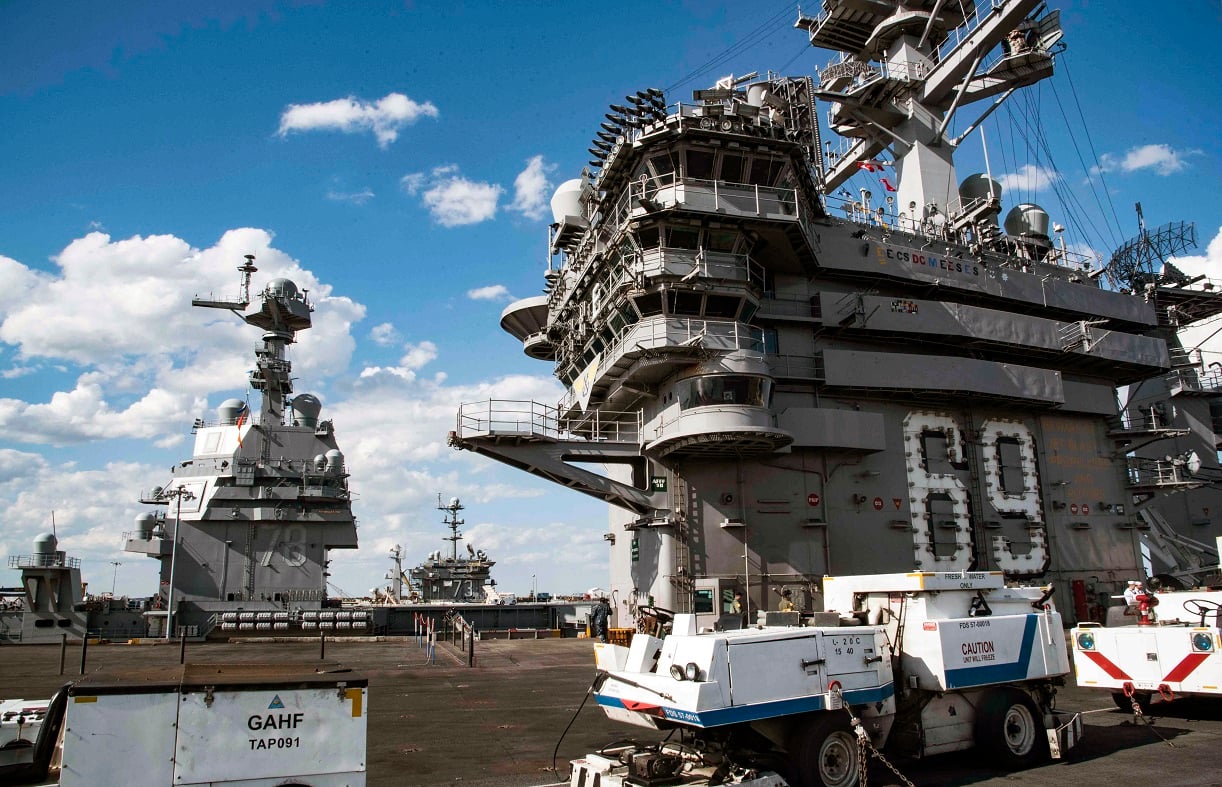Future of Navy Super-Carriers: Are Ford-Class Ships the Last of Their Kind?
Earlier this year, the USS Gerald R. Ford (CVN-78) completed its first worldwide deployment, launching over 8,000 sorties in the Mediterranean in response to the Israel-Hamas war. Despite production issues, the Ford-class carrier's capabilities make it a critical asset. However, its high cost and vulnerability to cyber-attacks, hypersonic missiles, and UAVs raise concerns about the future of super-carriers.
Summary and Key Points: Earlier this year, the USS Gerald R. Ford (CVN-78) completed its first worldwide deployment, launching over 8,000 sorties in the Mediterranean in response to the Israel-Hamas war. Despite production issues, the Ford-class carrier's capabilities make it a critical asset.

-However, its high cost and vulnerability to cyber-attacks, hypersonic missiles, and UAVs raise concerns about the future of super-carriers. The Ford-class, designed to succeed the Nimitz-class, incorporates advanced technologies like EMALS and AAG, increasing sortie rates by 25% and generating triple the power.
-While modern threats challenge their effectiveness, the Navy's ability to project power globally remains crucial.
Ford-Class Aircraft Carriers: Balancing Cost, Capability, and Security
Earlier this year, the U.S. Navy aircraft carrier USS Gerald R. Ford (CVN-78) completed its first worldwide deployment to the Mediterranean. The lead ship in the Navy’s latest class of nuclear-powered aircraft carriers performed well in its extended deployment, launching over 8,000 sorties in response to the Israel-Hamas war.
While the carrier’s trajectory to sea has not been linear since its production phase due to an array of issues, the ship’s unparalleled capabilities make it an essential asset to the service.
However, some analysts have argued that the Ford-class’ hefty price tag and vulnerability to cyber-attacks, hypersonic missiles and other new threats could render the whole “super-carrier” concept obsolete.
Could the Ford-class be the last U.S. Navy aircraft carrier class ever built due to the growing threats posed to aircraft carriers that are so expensive to build?
Introducing the Ford-class Aircraft Carrier
Perhaps the significance of nuclear-powered carriers is best exemplified by the Nimitz-class ships. For nearly fifty years, these 100,000-ton vessels have remained the mainstay of the Navy. Capable of traveling at speeds more than 30 knots powered by two A4W nuclear reactors, the Nimitz carriers have proven to play a pivotal role in the service’s fleet.

As the Nimitz-class’ successor, the Ford-class is designed to feature even greater capabilities. Born from the CVN-21 program, the Ford class was developed to feature a more efficient design than its predecessor. Specifically, the incorporation of an Electromagnetic Aircraft Launch System (EMALs) and an Advanced Arresting Gear (AAG) have greatly enhanced the Ford ships.
What makes the Ford-class carriers so formidable?
With EMALs and AAG in place, the Ford-class carriers can launch 25% more sorties in addition to generating triple the amount of electrical power. The Ford ships are powered by the new Bechtel A1B reactor, which is more powerful than the A4W reactors that power the Nimitz ships.
The Ford-class was also designed with the future in mind. To more easily incorporate unforeseen technologies down the line, each ship in this class is designed with a larger power output.
Which weapons pose the greatest threat to carriers?
Since the Ford-class is equipped with top-of-the-line capabilities and equipment, it should be no surprise that the carrier class is quite expensive. Some analysts have argued that modern-day threats could more easily target carriers.
For instance, the increased use of unmanned aerial vehicles (UAVs) across the globe could threaten these floating airports.
Undersea unmanned vehicles (UUAVs) and hypersonic missiles could cause the greatest damage to carriers. In addition to these low-tech threats, the Ford-class aircraft carriers, with their complex systems, could be more prone to cyber attacks.
Regardless of these potential downsides, the Navy’s ability to launch airframes from virtually anywhere in the world from the seas is undoubtedly essential to U.S. national security.
Smaller frigates and conventionally-powered carriers could also fulfill this role, but not to the same degree and to the same level of sophistication as newer nuclear-powered vessels.
About the Author: Maya Carlin
Maya Carlin, National Security Writer with The National Interest, is an analyst with the Center for Security Policy and a former Anna Sobol Levy Fellow at IDC Herzliya in Israel. She has by-lines in many publications, including The National Interest, Jerusalem Post, and Times of Israel. You can follow her on Twitter: @MayaCarlin.
Image Credit: U.S. Navy.


